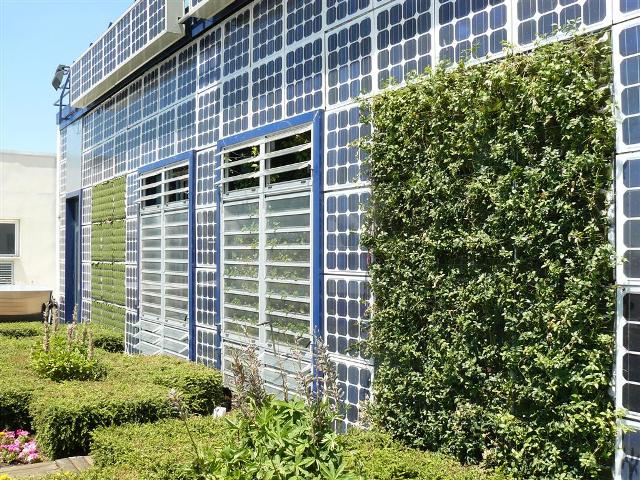Dec 12 2014
After years of monitoring different experimental buildings, a group of researchers from the School of Architecture of Universidad Politécnica de Madrid has developed a model that can estimate the thermal performance of vegetal façades regarding the traditional ones by previously studying the main characteristics of its climatology. Therefore, this model is a great tool to assess energy saving associated to vegetal façades installations in addition to having thermal benefits for the users of these buildings.
 An experimental prototype located at the Intemper Company facilities in Colmenar Viejo (Madrid). / Francesca Olivieri.
An experimental prototype located at the Intemper Company facilities in Colmenar Viejo (Madrid). / Francesca Olivieri.
In recent years, the energy and environmental problems have increased in Spain and worldwide. The construction industry, which is the most energy-intensive sector, produces the 36% of the CO2 emission in the European Union.
With this situation, there arises the need to find alternatives in the building field that involve less environmental impact and an improvement of the user welfare. In this context, the inclusion of vegetation into places and elements of architectural and urban design can constitute one of the most ancient and most interesting bioclimatic strategies, since this incorporation materializes the relationship between the building and the surrounding ecosystem.
Nowadays, the inclusion of vegetal systems in architecture can be used as a mean to increase the green area in cities through vegetal covering, which promotes energy savings and can give answers to specific environmental conditions. Over the last years, researchers have carried out numerous studies on the potential of these vegetal coverings in the construction field.
In most cases, researchers focus on the analysis of energy performances of these types of enclosures. Other studies assess the effects derived of its application on buildings and environment from very diverse points of view: thermal effects, reduction the urban heat island, regulation of the water cycle, air quality and acoustic comfort effect. Thus, the research conducted by the School of Architecture of UPM has shown that using vegetal elements in façades in places with climatology like Madrid can have benefits for the building both in winter and summer. This model takes into account passive cooling strategies and an improvement of comfort conditions for users during warm seasons.
This new model was developed from data taken in experimental buildings made available by the Intemper S.A Company. As a result, they have developed a model that has been verified with a very high degree of reliability. It is a practical model which is rapid and easy to use for any technician of the construction sector. Besides, the data needed for its usage is easily accessible, being available for all those involved in the project.
This model aims to provide a tool for all those who work on the usage and development of vegetal façades. This model is affordable, reliable and allows users to estimate the benefits derived from its usage as an alternative to other types of façades.